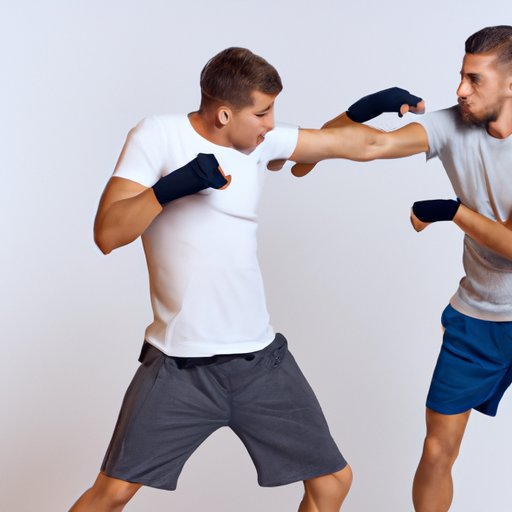
Introduction
Have you ever wondered how to punch effectively? Whether you’re new to boxing or just looking to improve your technique, this guide will teach you the proper form, footwork, and power necessary for a great punch. Punching can be a great workout, but it is also important to know how to do it effectively. In this guide, we will break down everything you need to know to master this important skill.
Proper Form and Technique
Before we delve into the specifics of punching, it is important to establish proper form and technique. Start by standing with your feet shoulder-width apart, your knees slightly bent, and your weight evenly distributed. Your non-dominant foot should be slightly in front of your dominant foot. Keep your elbows close to your body and your fists up in front of your face.
When throwing a punch, you should lead with your dominant hand and twist your torso and hips into the punch for maximum power. Aim for the center of your opponent’s body or their jawline. Make contact with your first two knuckles and try to snap your punch back quickly to avoid overextending your arm.
To maintain proper form during a punch, keep your chin tucked down and your eyes on your opponent. Keep your non-punching hand up to guard your face. End each punch with your fist back in front of your face to protect yourself from a counter-punch.
Footwork
Punching is not just about your arms and hands. Proper footwork is also crucial to effective punching. Good footwork can help you maintain balance, move in and out of range, and generate power for your punches.
Proper footwork technique starts with keeping your weight on the balls of your feet, not your heels. You should always be light on your feet and able to move quickly to adjust to your opponent’s movements.
When moving forward or backward, step with the foot opposite your punching hand first and then follow with your dominant foot. When circling to the left, step with your left foot first. When circling to the right, step with your right foot first. Keeping your feet shoulder-width apart at all times will maintain your balance.
Practice weaving in and out of range while maintaining a solid base and always staying light on your feet.
Power and Speed
Power and speed are the two most important components of a strong punch. Power comes from the rotation of your torso and hips into the punch, while speed is generated by a quick snap of the arm.
To improve your punching power, try incorporating weightlifting exercises that target your upper body, such as bench presses, rows, and pull-ups. Practicing throwing punches with resistance bands or dumbbells can also help build strength.
To improve your punching speed, practice shadow boxing and focus on snapping your punches back quickly. Skipping rope or other cardio exercises can also help increase your overall speed and endurance.
Remember to keep your technique and form in mind while working on power and speed, as these will ultimately determine the effectiveness of your punches.
Variations for Different Situations
Different situations may require different types of punches. A jab, for example, is a quick straight punch with your lead hand that can be used to set up more powerful punches. A cross is a powerful punch thrown with your dominant hand that is aimed at your opponent’s jawline. A hook is a punch thrown to the side of your opponent’s head or body. An uppercut is a punch thrown upwards into your opponent’s chin.
Knowing when to use each type of punch is crucial for effective striking. For example, if your opponent is leaning forward, an uppercut can be an effective way to catch them off guard. If they are keeping their guard high, a hook to the body can be an effective way to wear them down.
Common Mistakes to Avoid
There are many common mistakes people make when punching. One of the biggest is overextending your arm, which can leave you off balance and open to counter-punches. Another common mistake is forgetting to keep your non-punching hand up to guard your face, leaving you vulnerable to attacks.
It is also important to not slouch or lean too far forward, as this can make it difficult to maintain your balance and leave you open to takedowns.
Remember to always keep your chin tucked down, your eyes on your opponent, and your feet shoulder-width apart to maintain proper balance.
Training and Strengthening
To train and strengthen your punches, incorporate shadow boxing into your routine. Shadow boxing is an effective way to work on your technique and form without a partner or equipment.
Another way to train your punches is by hitting a heavy bag. A heavy bag is a large, cylindrical bag made of heavy materials that is used to develop punching power and endurance. Focus on maintaining proper form and technique while hitting the bag, and vary up your punches to keep your workouts interesting.
You can also practice on a speed bag, which is a small, round bag that is used to improve hand-eye coordination and punching speed. Incorporating resistance bands into your routine can also help increase your punching power.
Conclusion
In conclusion, punching is a crucial skill to master for anyone looking to improve their physical fitness or self-defense capabilities. Proper form, footwork, power, and technique are all important factors in having an effective punch, and practicing these elements regularly is crucial for improvement. Remember to always prioritize proper form and technique, and keep in mind the different types of punches for different situations. With consistent practice and dedication, anyone can improve their punching skills.




